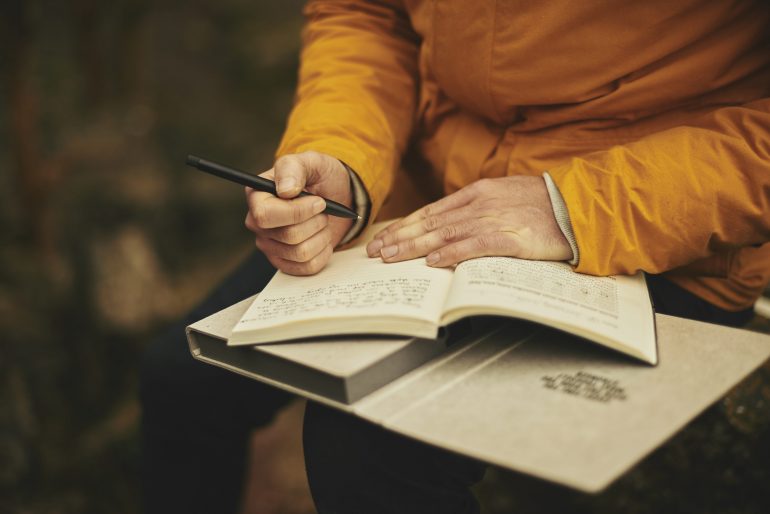I understand poetry as the study of the Universe and how it works – that’s how some define physics. Often, I hear people say they don’t like poetry because it’s hard to understand what poets mean.
“Why can’t they just say it more simply or plainly?!!!?”
On the other side, are people who with seeming effortlessness, as a physicist can, decode the inner workings of a poem, illumining the purpose of every nuance, including the space between each verse to reveal the intricate beauty of life.
I’ve experienced both. Most of the time, it’s very hard for me to decipher what Shakespeare is saying without carefully dissecting and considering each word – asking for help from other readers. Adelia Prado, Mary Oliver or Hafiz on the other hand, reach out of the pages to shake me into listening an understanding– so clear and timely every earned line, I can’t help but get it. Perhaps it’s like wine, which dances on every palette differently, amusing the sipper according to their mix of biology and mind.
No matter which side of the line you find yourself on, writing poetry is accessible and beneficial to everyone. You don’t have to understand other poets. You don’t have to be smart or witty. You don’t even have to be right, by any external measure. Heard of poetic license? In the rarified space of writing poetry, you get to say what you feel, see, taste and hear – totally uncensored. You get to be free in your voice and consideration of life. You get to be wholly you.
Everyone has poetry in them. Everyone’s life is poetic. You just have to be willing to hone your listening and observation abilities and most importantly, perhaps most difficult, kill self-judgment – the enemy of art.
Silencing the inner judge
By following 5 Steps (Meet a Friend, Free Flow, Distillation, Get Drunk, and Survive the Hangover), I silence the inner judge and free the artist within. This is an ongoing process and method of engagement – just when I think I’ve lost that inner judge, she comes gallivanting in as if knighted, dragging the artist behind her, chained and for the moment defeated (aka the dry spell).
This 5-step process may happen over 6 months, or it may happen over 6 seconds. The point is to continuously engage, until the point of mastery – which if you’ve been fortunate enough to sit at the feet of a true master, you know that the joy of exploration, engagement and the subsequent expansion never ends. They learn and grow, and while appreciating how far they’ve come, they journey on.
More simply put, mastery doesn’t mean the inner judge will never show her face again. That’s not the promise of these steps. The promise of these steps is that you will recognize when the inner judge is in control and what to do about it. You will know one method for getting to know yourself better and freeing the artist within. I’d love to give you a magic pill, but poets don’t take pills.
Step 1: Meet a Friend
Get into a comfortable posture, ideally in a quiet place where there is no noise or distractions. If you can find a quiet spot in nature, even better. Close your eyes and become aware of your breathing. Be easy about it. This is not meditation per se, we’ll leave nirvana for another time. Simply become aware of what your breath feels like. Is it tight? Is it shallow? Do you find yourself taking a few short breathes and then wanting to take one big one? Notice, with no worries. Nothing to change. Just breathe.
After a few minutes, visualize yourself stepping out of your body and sitting in front of you as a mirror image. Take some time to really look at yourself. There is a tendency; we all have it, to pick ourselves apart. For the purposes of this exercise indulge that itch for just a few moments, so that you can start to identify and distinguish the nature and tone of that voice (as different from the voice of the artist).
Then, pick a situation in your life that feels hard, painful, unresolved, or that you have anxiety about. Let all your judgments, shame, and anger arise. Take notice of what happens to your breath. Take notice of how you talk to yourself. Nothing to change. Just keep breathing, and take note mentally. Again, it’s important to indulge the so-called negativity for just a few moments, only to exercise your ability to recognize it.
Next, shift your perception and think of yourself as a friend who has come to you for support, seeking a conversation about this situation. From the eyes of a friend, what do you see? What do you hear? What would you say to your friend about this situation? What questions do you have? What wisdom or insight would you give? What support? What is happening to your breath now? Take note mentally.
Spend about 10 minutes or less in this conversation. Stay light and fresh within it. We are not aiming for a deep meditation, rather for a state of vibrant and lively self-inquiry, at times self-confrontation. Discipline is necessary, take care that you don’t over indulge in any feeling or hyper focus on any situation. As much as self-judgment is an enemy of art, so to on the other side of the spectrum is emotionalism and victimhood.
Step 2: Free Flow
Now, take about 2-3 minutes to write freely about the conversation. Record any feelings, words, phrases, insights, images or life experiences that came to mind. If your mind wandered, great! Record that too. There’s no need to be coherent or eloquent. Just write freely. Don’t worry if it makes sense or of it’s good enough. Just write.
Step 3: Distillation
Next, take 2-3 minutes to extract any words from your free flow writing that are repeated or phrases that:
- Give you the chills
- Intrigue, surprise or confuse you
- Give you a sense of lightheartedness or playfulness
- Make you feel seen or understood
- Give you a sense of relief
- Are sensual, beautiful and enticing
- Make you say, “I will never share that with anyone!”
As you do this more and more, you’ll learn your own unique signals. Some of you may have a poem already formulating. Some may have what appears to be a bunch of non-sense. Stay with it. Keep going. There is more to come.
Step 4: Get Drunk
My favorite choice of inebriation is a long saunter in nature. We are an undivided part of nature. When we seek to understand nature, we understand ourselves more deeply, a wondrous exchange that leaves me high and tickled. This is true for any action that brings you joy. If you love to cook, cook. If you love animals, spend time with an animal. If you love sipping a cup of tea under a cozy blanket, do it. The point is to become intoxicated in the beauty of what you appreciate and observe, naming every detail and subtlety of your affection as you do so.
I see the resulting state as what artists call the muse. A muse is traditionally thought of as a person or a lover, but I think it’s a misapplied credit. The muse is a state of oneness achieved by a voracious appetite to see the beauty in all things, whether that’s a person, a Redwood, or a plumber’s crack. This is why I choose nature, because there are many occurrences in nature that are seemingly ugly – the monkey family stealing another monkey family’s baby for sport and dominance, the cry of a lioness when she loses her cub, the rotting of a might oak, or the tsunami.
You can incite the muse at anytime through the power of your love and appreciation of life. After you have the muses’ attention, now drunk, revisit your words and phrases, ask questions and record.
Step 5: Survive the Hangover
The subsequent hangover comes swiftly, be prepared. The descent is where the poem lives. Every painting needs contrast to bring forth its beauty. The same is true of a poem. I’ve found exquisite words at the bottom of my laundry basket, while paying the bills, stuck in traffic during a commute or simmering the tantrum of a child. I’ve found poems in my efforts to research and know more about the beluga whale’s communication and echolocation, not to mention cuteness.
You’ve ignited a conversation within you from Step 1 to 4, and now in Step 5, listen. The poem will reach you from every angle until you listen – through another’s poem, in a documentary, the words of an elder or teammate, a billboard sign (in your more dense moments) or with the flight patterns of the hummingbird and a scurrying baby lizard ready for a sunbathe.
Question. Record what you hear. Revisit the words and phrases you wrote in Step 3. Do they cry for evolution? What have you learned? What’s new? What’s old?
Keep repeating these five steps until you feel complete with your poem.
In closing, if there is anything in you that wishes to rush, I share these verses from the great Adelia Prado:
Rebuke of Pride
Whatever reveals itself immediately,
pulsating, finished,
cacophonies leaking preciousness,
sneers at the poet
busy wiping his texticles:
Oh, buffoon,
in poetry as in painting
the eyes belong on the belly.
Let it fly!
(The Mystical Rose, Selected Poems, Adelia Prado, Transalted by Ellen Dore Watson, Bloodaxe Books, 2014)





